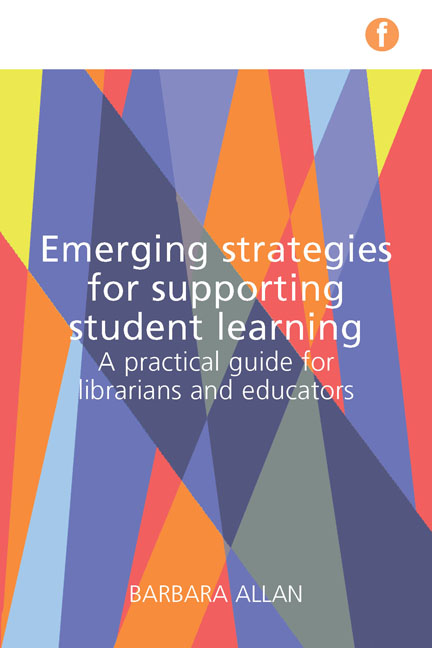Book contents
- Frontmatter
- Contents
- Figures and tables
- Acknowledgements
- 1 Introduction
- 2 Working with students
- 3 Digital literacies
- 4 Employability
- 5 Approaches to learning and teaching
- 6 Learning and teaching activities
- 7 Making it happen
- 8 Designing face-to-face, blended and online courses
- 9 Delivering learning experiences
- 10 Evaluation of learning and teaching activities and courses
- 11 Lifelong professional development
- Index
9 - Delivering learning experiences
Published online by Cambridge University Press: 08 June 2018
- Frontmatter
- Contents
- Figures and tables
- Acknowledgements
- 1 Introduction
- 2 Working with students
- 3 Digital literacies
- 4 Employability
- 5 Approaches to learning and teaching
- 6 Learning and teaching activities
- 7 Making it happen
- 8 Designing face-to-face, blended and online courses
- 9 Delivering learning experiences
- 10 Evaluation of learning and teaching activities and courses
- 11 Lifelong professional development
- Index
Summary
Introduction
This chapter provides guidance on delivering learning experiences either face to face or online. It covers the following themes: preparing yourself, face-to-face delivery, online delivery and co-facilitation.
A useful structure for thinking about delivering learning experience is to consider the following aspects of the course or programme: preparing yourself, getting off to a good start, facilitating the learning processes, and closing the course. For both virtual and face-to-face courses think about individual learners, group dynamics and yourself. Many tutors find that they spend so much time focusing on individuals or the whole group that they forget about themselves. This is counter-productive as personal awareness may provide important indicators about the learning process and the experiences of learners.
Preparing yourself
Before you start delivering a course or programme, whether face to face or online, it is worth asking yourself a number of questions about the course, the students and yourself. The questions listed below will help to ensure that you have considered a range of factors which are likely to affect the success of the course.
Ask yourself these questions about the course:
• Am I confident about the course design?
• Have I piloted the course or, if this isn't possible, have I talked it through with a colleague and run through it in my mind?
• Am I familiar with the learning environment (virtual or physical)? If not what do I need to do to make myself confident in this environment? Do I have access to help, e.g. via phone or e-mail, and do I have the necessary contact details?
• Do I have all the relevant learning and teaching materials?
Ask yourself these questions about the students:
• Do I know who is likely to attend the event?
• Do any of the students require special facilities or adjustments to enable them to gain full benefit from the course? Have I made the necessary adjustments?
• How have they been informed about the event and what they will gain from it (the benefits)?
• Have they received the relevant information, e.g. location, timing and/or how to access the online site?
• Am I able to send a welcome e-mail to students?
Information
- Type
- Chapter
- Information
- Emerging Strategies for Supporting Student LearningA Practical Guide for Librarians and Educators, pp. 125 - 136Publisher: FacetPrint publication year: 2016
